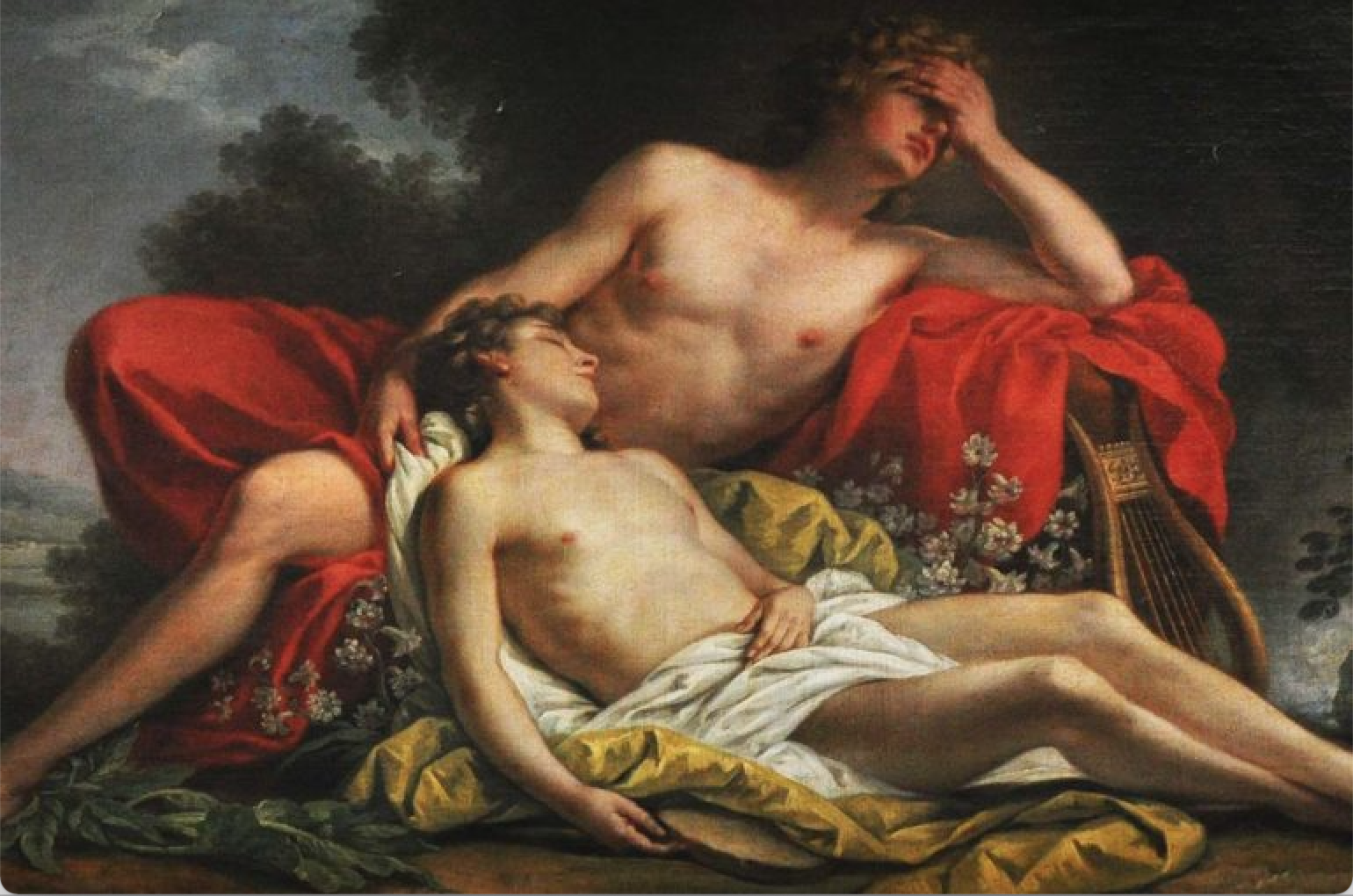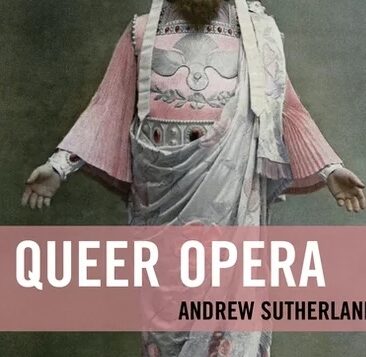
QUEER OPERA
by Andrew Sutherland
Lexington Books. 299 pages, $120.
IN 1767, the eleven-year-old Mozart premiered his first opera, Apollo and Hyacinth (K. 38), the story of an all-male love triangle between Apollo, Hyacinth, and Zephyrus. The performance, at the equally all-male Salzburg University, was presented by adolescent boys. The original myth that Father Rufinus Widl’s libretto was based upon presented obvious problems for a conservative Catholic school. Good Father Widl toned down the same-sex love plot. The moral became that “homoerotic attachments are acceptable, provided they manifest within the boundaries of socially appropriate behaviour,” states Andrew Sutherland in Queer Opera, his survey of homoerotic elements in the history of opera.
We know that young Mozart’s opera was well received, but history is silent on whether anyone in the audience recoiled at Father Widl’s bowdlerization of the original queer story. What is safe to say is that, since its inception, opera—with its beauty, pathos, spectacle, and willingness to present stories of suppressed and transgressive love—has always found ardent admirers among queer folk. “For centuries,” Sutherland writes, “queer observers have been able to identify with the frustrations of the oppressed, the exhausting obstacles preventing true love and the strength of character to achieve recognition in a society that routinely rejects differences.”
While opera has always, to an extent, portrayed queer themes, it wasn’t until the early 20th century that non-stereotypical gay characters began to appear in significant numbers. And while the 21st century has witnessed an increase in the number of operas with openly LGBT composers and characters, Sutherland does not restrict himself to a discussion of these works, but has opted instead to examine works that, as he puts it, “involve a sexual complexity for which a specific label would be unhelpful.” He’s after understanding the ways in which queer experience in the broadest sense of that term finds a voice in opera or, as he puts it, that “particular resonance” through which queer consciousness can be positively understood.
The book is divided into seven chapters, each of which addresses a particular theme that has generated the creation of queer operas. Chapter 1 looks at the wealth of plot material from the myths of the ancient world, such as Marc-Antoine Charpentier’s David et Jonathas (1688) and Lou Harrison’s much more recent Young Caesar (1971). Harrison’s groundbreaking opera, Sutherland contends, is an example of a piece that provided reassurance to other LGBT composers that they could “claim space” on the operatic stage.

In Chapter 2, Sutherland turns his attention to the processes of “passing” and “coding”—the ways that gay and lesbian people have sought to avoid “the pernicious presence of vigilante homophobes.” Among the operas he discusses here are Richard Strauss’ Salome (1905), Benjamin Britten’s Billy Budd (1951), and Gregory Spears’ Fellow Travelers (2016). Subsequent chapters focus on operas whose broad theme is the closet (e.g., Charles Wuorinen’s Brokeback Mountain, 2014); the dominance of a louder, more forceful group over another (Jorge Martín’s Before Night Falls, 2009); assimilation (Benjamin Britten’s Death in Venice, 1973); killing gay people (Nico Muhly’s Two Boys, 2011); and homoerotic awakening (Paula M. Kimper’s Patience and Sarah, 1998).
Sutherland, who is Director of Music at Methodist Ladies’ College (Melbourne) and an adjunct lecturer at the Western Australian Academy of Performing Arts, can be commended on many fronts. He has certainly done his homework. He considers over fifty operas from the Baroque to the present day. He does not set his sights on just the big names but includes several operas by contemporary composers whose names are hardly household words. He is scrupulous about including lesbian composers and gives commendable attention to operas with lesbian, bisexual, and trans characters. Along the way, he peppers his discussions with fascinating tidbits of information, such as the fact that Leonard Bernstein’s A Quiet Place (1983) elicited protests that called it “trash” and warned that his operas “spread herpes”!
But the book’s major strength—its comprehensiveness—is also a weakness: it leaves the reader overwhelmed and awash in too much information. I, for one, would have been happier with fewer operas discussed in greater depth. Moreover, Sutherland’s discussion of each opera follows a rigid formula. He introduces us to the historical and psycho-sexual context of the opera, follows that with a scene-by-scene synopsis of the plot and a bit of musical analysis, and concludes with a short discussion of the significance of the opera to the LGBT community. There is little if any variation in this pattern. The result is a kind of dull, lockstep march from one opera to the next.
But my biggest quibble with the book (aside from its price!) is Sutherland’s fondness for tacking on bits of social commentary at the end of his discussion of each opera. They often amount to nothing more enlightening than bland platitudes: “fairness and equality in society are fragile social attainments”; “being a member of the lgbtq+ rainbow does not automatically provide individuals with a complete understanding of the complex issues faced by the entire community”; “even queer audience members can have much to learn about non-conforming, gender-fluid pansexuality.” I found myself chafing at these gratuitous lessons.
This is hardly the first book to examine queer opera. A check of my local university library under the subject heading “Homosexuality in opera” produced 153 hits—books, dissertations, articles. Still, Sutherland’s study may be one of the first to embrace a wider, “queer” compass.
Ten years ago, when I attended the Metropolitan Opera’s production of Nico Muhly’s Two Boys—an opera that packed a huge emotional punch for me—I thought about how lucky the young gay men in the audience were to have opera like this in their lives, one that reflects and takes seriously the complex reality of their lives. Sutherland echoes my thoughts when he writes: “I hope this book serves not only as a celebration of a section of queer history and culture but also as a caution that the story continues to evolve, and queers need to remain an active part of the narration.”
Philip Gambone, a regular contributor to this magazine, is the editor of Breaking the Rules: The Intimate Diary of Ross Terrill (2023).






